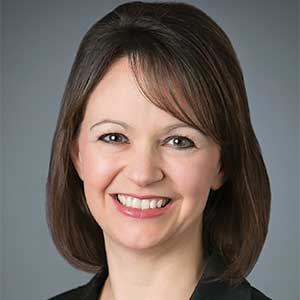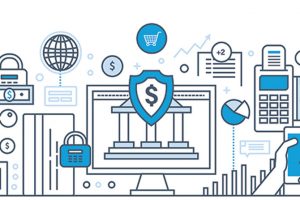By Ashley Hardesty Odell, Bowles Rice LLP
Employers know that a happy and thriving workforce is more productive and, consequently, more profitable. In today’s workplace, more employers recognize that diversity, equity, and inclusion (DEI) play a key role in an organization’s success. Increased diversity promotes ingenuity and creativity. Equity cultivates trust and a sense of fairness. Inclusion fosters loyalty and commitment. This is why employers today endeavor to implement and develop rich diversity, equity, and inclusion programs in the workplace.
It is not a simple undertaking, and it involves much more than written policies and plans (although such policies and procedures are a foundational component of any successful program). More importantly, a successful DEI program requires a meaningful shift in culture and a change in mindset, starting with the organization’s top leadership. It is hard work. But the outcomes from a successful DEI program can be transformative for the organization.
There are countless opportunities to develop DEI in the workplace. To get started, however, here are five key concepts to consider:
- Understand the business case for DEI;
- Identify and empower DEI allies;
- Measure the organization’s current diversity and culture;
- Audit the organization’s policies; and
- Educate all stakeholders.
As more fully explained below, these guiding principles are only building blocks for a thoughtful and comprehensive DEI program. The success of that program depends heavily on the organization’s willingness to invoke and promote change.
First, be prepared to discuss DEI within your organization as more than a moral imperative. Promoting diversity, equity, and inclusion is, of course, the right thing to do. But it is also a business investment. And understanding the business case for DEI will capture more buy-in from more stakeholders.
A workplace that is not diverse, equitable, or inclusive is far less productive. Diverse teams are more innovative and create new and different opportunities. Millennials and Generation Z insist on DEI, so a comprehensive and meaningful DEI program can help with recruiting and retention. Finally, clients and customers want the businesses that they patronize to be more diverse and reflective of themselves. Framing discussions around the potential financial outcomes resulting in the organization’s investment in DEI is essential to any DEI program’s success.
Second, identify and empower DEI advocates in the organization. Make sure those allies are well represented in the organization’s top leadership. Real DEI advocates and allies are agents of change, and they will push for more than lip service or a “check the box” DEI program. Empower those allies and change agents with meaningful programming designed to transform the organization’s culture. Appoint a DEI officer and committee and give them measurable expectations.
It also is important to identify allies from outside the organization and use their influence. Perhaps some of your best customers are DEI advocates and could influence the organization to focus on the issue. Perhaps your competitors are investing in DEI and seeing positive outcomes. It is very unlikely that all stakeholders will support DEI, but knowing those who are supportive is critical to the program’s long-term success.
Third, take note of the organization’s current statistics and consider a culture survey. Measure the number of women and diverse stakeholders in leadership at each location or branch and each department. Identify where there are gaps in the representation of diverse stakeholders. Set the baseline and re-measure periodically. Let your employees know you are doing this. Doing so proves to them that the organization values diversity and equity. Talk to employees and ask them how they feel about their work and whether they feel valued and included in the organization’s success. Do not wait for an employee’s exit interview to find out what the employee thinks. Asking the workforce for input is a simple way to build inclusion.
Fourth, audit the organization’s existing policies and adopt modifications or new policies that promote DEI. Do you have an anti-harassment policy, and is it broad enough? What is your parental leave policy? Allow for remote and flexible work options. As part of your ongoing culture survey, evaluate whether these policies are applied fairly and consistently and look for negative stigma associated with them. Consider adopting a comprehensive DEI plan and more discrete annual action plans. Set a budget for DEI programming. These efforts further demonstrate the organization’s commitment to DEI.
Finally, educate all stakeholders about the organization’s DEI program, starting with orientation, and include regular reminders in the form of DEI updates, learning opportunities, and celebrations of DEI related events. Educate all stakeholders on implicit bias and how it impacts everyone’s decision making and judgment. Require implicit bias training for supervisors, recruiters, and anyone responsible for compensation decisions. Cultivate awareness of events like Martin Luther King, Jr.’s Day of Service, Equal Pay Day, Juneteenth, Pride Month, and Disability Awareness Month. Ensure your marketing department is thoughtful about incorporating and highlighting diversity and diverse stakeholders in internal and external communications. Keep the conversation going — DEI is a long game.
Again, the ways to incorporate and build DEI into the workplace are wide-ranging. This article outlines some foundational ideas for developing DEI. But there is no single, static DEI program that will work in every organization. DEI programs will (and should) vary from organization to organization. They will (and should) evolve. They will (and should) transform the industry and business community, all for the better.

Ashley Hardesty Odell serves as the Diversity Partner at regional law firm Bowles Rice. Practicing from the firm’s Morgantown office, her work focuses on employment law and first-party/extra-contractual insurance defense. A 2019 Fellow of the Leadership Council on Legal Diversity and Chair of the West Virginia Chamber of Commerce’s Diversity Working Group, she regularly counsels organizations and clients on DEI in the workplace. Contact Ashley at 304-285-2522 or ahardestyodell@bowlesrice.com.
This story appears in Issue 4 2020 of the West Virginia Banker Magazine.







